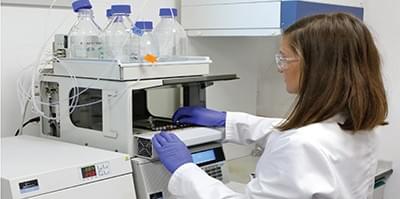Have you ever wondered how scientists know exactly what a material is made of? How do they determine the structure of a new drug molecule, or verify the purity of the chemicals we use in our daily lives? Welcome to the fascinating world of chemical characterization – where scientists become molecular detectives, using an impressive array of tools to unlock the secrets of matter itself.

The Chemistry Detective's Toolkit
The importance of chemical characterization touches nearly every aspect of our modern lives. In the pharmaceutical industry, knowing the exact structure of a molecule can mean the difference between a life-saving medicine and a harmful compound. Materials scientists creating new technologies rely on these techniques to understand and improve everything from smartphone screens to solar panels. Environmental scientists use characterization methods to detect pollutants and monitor the quality of our air and water, while industries depend on these same approaches to ensure their products are safe and consistent.
The Basic Principles: How Do We "See" Molecules?
Here's where it gets interesting – we can't directly "see" molecules with our eyes, so scientists have developed clever ways to make molecules reveal their secrets. It's rather like interviewing a suspect from different angles to get the complete story. We can shine light on molecules through spectroscopy, weigh them using mass spectrometry, expose them to magnetic fields with NMR, or blast them with electrons in electron microscopy. Each technique is like asking the molecule a different question, and by combining the answers, we build a complete picture of its identity and structure.
The Magic of Modern Analysis
Consider something as common as a blood test when you visit your doctor. The laboratory analyzing your blood uses many of the same techniques we use in chemical characterization. Spectroscopy might measure your cholesterol levels, while mass spectrometry checks your hormone levels, and chromatography separates and analyzes different components in your blood. These same principles apply whether we're analyzing blood samples, developing new materials for solar panels, or ensuring the safety of your food.

From Simple to Sophisticated
The evolution of chemical characterization reads like a scientific success story. Modern instruments can identify substances using samples smaller than a grain of salt and determine the arrangement of atoms in complex molecules in just hours. The sensitivity of today's equipment is truly remarkable – imagine finding a single grain of sand in an Olympic-sized swimming pool. That's the level of precision we can achieve when detecting impurities in materials.
Looking to the Future
The field of chemical characterization continues to push boundaries and break new ground. Scientists are developing techniques that allow us to watch chemical reactions as they happen in real-time and study materials under extreme conditions. We can now analyze complex mixtures without separating them and map the distribution of elements in biological tissues. These advances are opening new frontiers in our understanding of the molecular world.
Conclusion: The Never-Ending Quest
Chemical characterization is more than just a set of analytical techniques – it's our window into the molecular world. Every day, scientists around the globe use these methods to solve problems, develop new materials, and deepen our understanding of the world around us. As we develop more sophisticated tools and methods, we continue to push the boundaries of what we can learn about the materials that make up our world.
